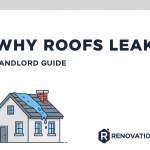How to Paint Over Lead Paint Safely in NYC
Your guide to EPA rules, professional methods, and keeping your family safe during a renovation in a pre-war building.
Schedule a Lead Paint ConsultationThe charm of a pre-war Brooklyn brownstone or a classic Manhattan co-op comes with a hidden legacy: layers of old paint that may contain lead. While intact lead paint is generally not a hazard, the moment you decide to renovate or even just hang a picture, you risk creating dangerous lead dust. Federal and city laws are extremely strict about how this material is handled, and for good reason: lead exposure can cause serious health problems, especially in children.
This guide is not a DIY manual for lead paint removal—that is a job exclusively for certified professionals. Instead, this is your resource for understanding the risks, knowing the laws, and learning the safe, professional process for painting over—or “encapsulating”—lead paint. Whether you’re planning a full Manhattan gut renovation or a simple refresh with our Brooklyn painting services, this information is essential for a safe and compliant project.
Section 1: Does Your NYC Apartment Have Lead Paint?
Lead was a common ingredient in paint until it was banned for residential use in the U.S. in 1978. In New York City, it was banned even earlier, in 1960. However, due to old stock and varying enforcement, the 1978 federal date is the safest bet.
Interactive Tool: Lead Paint Risk Calculator
Enter the year your building was constructed to see the likelihood of it containing lead paint.
Section 2: The Law: EPA RRP and NYC Local Law 1
Disturbing lead paint is heavily regulated. The two main sets of rules you must know are the federal EPA Renovation, Repair and Painting (RRP) Rule and New York City’s Local Law 1.
Interactive Tool: Does the RRP Rule Apply to My Project?
Select the area of paint you plan to disturb.
Section 3: Encapsulation: The Pro’s 10-Step Process for Safely Painting Over Lead
The safest and most common way to deal with intact lead paint is encapsulation—a method where the hazardous paint is sealed beneath a special, durable coating. This is different from abatement, which is the complete removal of the paint and is a far more expensive and disruptive process. Our professional Staten Island painting services are fully certified for this work.
Interactive Tool: Encapsulation vs. Abatement
What is the condition of your paint?
Section 4: The Bottom Line: Costs & Hiring a Certified Pro
Working with lead paint adds significant cost to a project due to the required safety measures, specialized equipment, and legally mandated procedures. A certified contractor, like our teams who provide painting services in Queens, will include these costs transparently in their quote.
Interactive Tool: Lead-Safe Painting Cost Estimator
Estimate the added cost for lead-safe practices for a standard 12’x15′ room.
Standard Painting Cost: ~$950
+ EPA RRP Compliance Add-on: +$500 – $1,000
Total Estimated Cost: $1,450 – $1,950
Includes containment, HEPA vacuuming, specialized cleaning, and proper disposal.
Section 5: Your Lead Paint Questions Answered
What are the health risks of lead paint?
Can I just use any primer to cover lead paint?
Does my co-op board need to be notified about lead paint work?
Don’t Take a Risk with Lead Paint
Protect your family and your property by hiring a certified professional. Our teams are fully EPA RRP certified to handle lead paint safely and legally. Contact us for a consultation and a detailed, compliant proposal.






